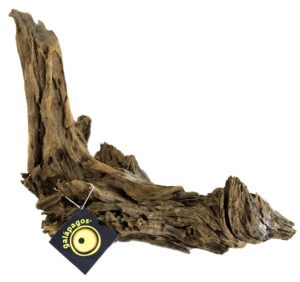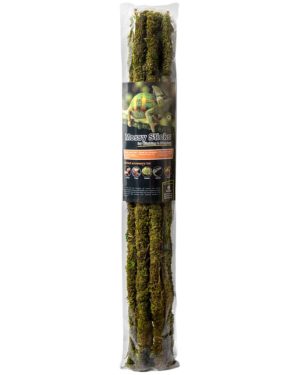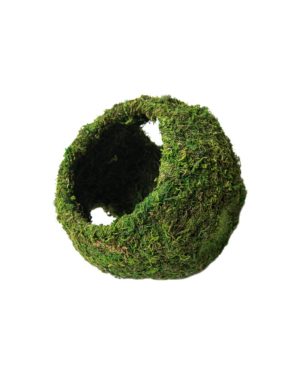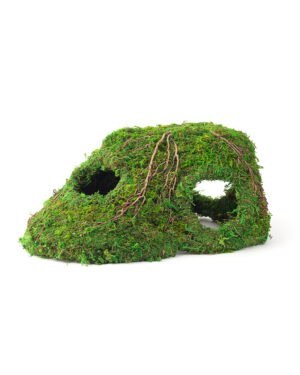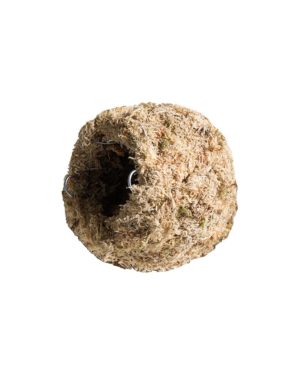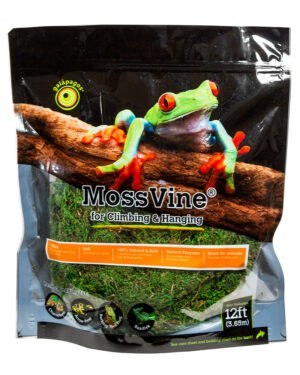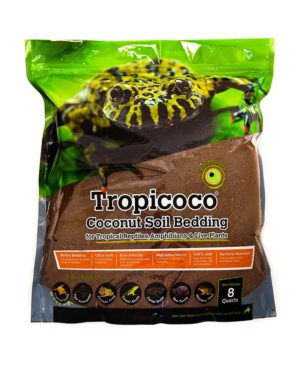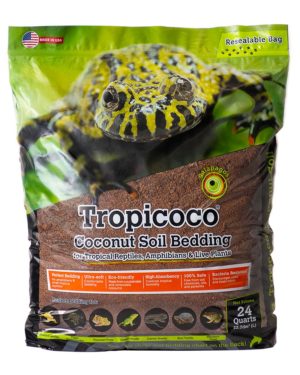Environment
Tropical
Light
Optional
Temperature
75-85°F
Humidity
60-70%
Most Active
Nocturnal
Lifespan
4-5 years
Size:
Red-Eyed Tree Frogs reach an adult size of approximately 2.5-3.5 inches. Males tend to reach about 2.5 inches, while females can grow to 3.5 inches. They are often sold when they are 8-10 weeks old and about 1-1.5 inches.
Lifespan:
In captivity, with proper care, Red-Eyed Tree Frogs can live 4-5 years or more.
Enclosure:
When designing your Red-Eyed Tree Frog enclosure, make sure to remember that they are native to tropical, humid rainforests. These frogs can be housed in 10-15 gallon tanks or 18”L x 18”W x 18”H tanks or larger. These frogs can be kept in a group rather than a single individual, but overcrowding can be detrimental to their health. The general rule is about 5-10 gallons per frog. Make sure to secure the lid as these frogs can be escape artists.
Frog Temperature & Humidity:
Red-Eyed Tree Frogs do well in warmer climates and often need supplemental heating. During the day temperatures can reach 75-85 degrees. At night the temperature can drop into the low 70s. Make sure to monitor your tank temperatures for a couple days in a row before adding your frogs. Lastly, remember that if you decide to run lights for live plants that they will increase the temperature by a couple degrees.
Humidity should be kept at 60-70 percent at all times. Be sure to mist the cage 1-2 times a day or as needed to keep the proper humidity. Having a large water dish will help maintain a higher humidity and reduce the amount of misting needed. One of the best ways to increase humidity, on top of the water feature, is using a large amount of Golden Sphagnum Moss on the substrate side. Golden Sphagnum Moss is one of the highest quality mosses that hold humidity better than any other moss and is very mold resistant.
Other options that are great to help control and maintain humidity and make your Red-Eyed Tree Frog’s enclosure more natural is with additional Mosses and live plants. Green Sphagnum Moss, Royal Pillow Moss, Sheet Moss, Pillow Moss, Bromeliads, and Ferns are all excellent at storing and maintaining humidity.
Substrate:
Red-Eyed Tree Frogs do well on a variety of different substrates. Paper towels and terrarium liners are good substrate options for those that want something easy to change but be sure to keep a close eye on temperature and humidity as these options don’t hold up as well as other substrates.
There are several types of soil mixes, but Bioactive, ABG mixes, and Coconut Soil mixed with Golden Sphagnum Moss are some of the most common. These mixes are also great naturalistic substrate options that help maintain and control humidity. Adding on Leaf Litter is another great idea as it provides shelter, humidity, and is ideal for microfauna when doing a naturalistic enclosure. No matter what substrate you decide to use, make sure to keep an eye on humidity as too much or too little can cause problems.
Hides:
Providing multiple safe hiding places for your frog is extremely important to the overall health of your amphibian. Red-Eyed Tree Frogs need a secure, dark cave or hide that they can retreat to in order to reduce stress and feel safe. They should have an arboreal and terrestrial hide, as well as a large amount of foliage to hide in.
Plants and commercially available hides can be used to accomplish this (Sapa and Moss Domes are popular naturalistic options and are made of moss to help with humidity). The plants and leaves that make up the foliage can be fake or live depending on your personal preference.
Lighting:
There is no special lighting needed for Red-Eyed Tree Frogs. However, if you decide to do live plants you will need to research what kind of lights you need for the specific plants. Only use the lights for a maximum of 12 hours as too much light can cause stress.
Feeding:
Red-Eyed Tree Frogs are insectivores, meaning they only eat insects. Crickets are the main staple of a healthy tree frog. Waxworms can be fed on occasion as they are higher in fat.
All feeder insects should be dusted with calcium and multivitamins, as well as gutloaded. Simply place the feeder insects and a small amount of powder into a plastic bag and shake lightly. Gut loading refers to feeding the insects nutritious food, generally powder or gel, for at least 12 hours before feeding.
Feed 3-4 times a week. Offer approximately 2-4 crickets per feeding and remove any insects that have not been eaten within 24 hours.
Water:
These frogs love to soak in their water dishes and will need a large one that is not incredibly deep. Adding a ramp is a good idea in case they slip or need extra help getting out after a good soak.
Decor:
After the necessities, Red-Eyed Tree Frog enclosures can have any variety of decor that help to add enrichment. Spider Wood, Manzanita, and Driftwood are popular additions that act as a centerpiece and anchor for a variety of plants and other accessories. Natural Stones, Mosses, and Plants are also a great addition for general stimulation and enrichment with the added benefit of a naturalistic look.
Interesting Facts:
- Hylidae is commonly referred to as “tree frogs and their allies” but includes a large range of frogs, including terrestrial and aquatic frogs.
- Their large red eyes are used as a defensive mechanism to startle potential predators and give the frog enough time to escape. This behavior is called “deimatic behaviour” or “startle display” and refers to any pattern or bluffing behavior that is meant to momentarily distract a predator.
- Size does matter when it comes to mating with Red-Eyed Tree Frogs. Various studies have shown that the larger body size of a male is an indicator of quality and signifies older age, thus, good survival genes.
- When ready to mate, males shake branches to keep rivals away and attract females. This is one of the first cases of tree-dwelling vertebrates using vibration to communicate that does not involve mating calls or vocalization.









